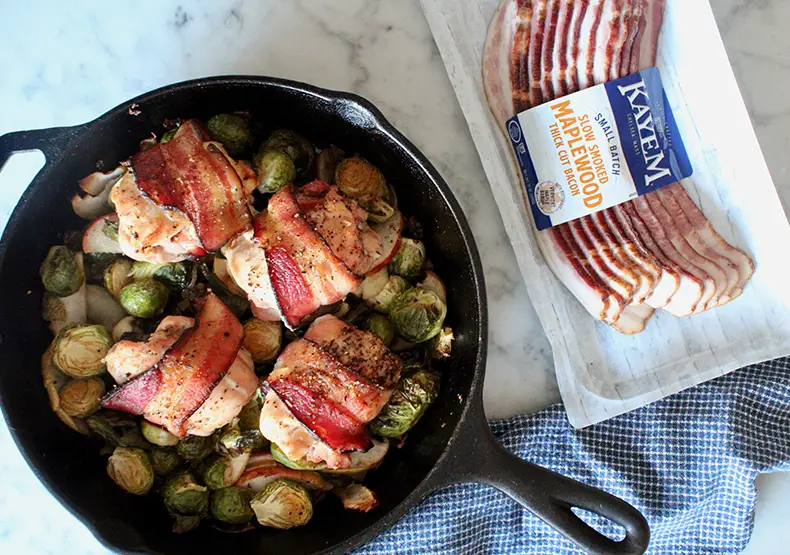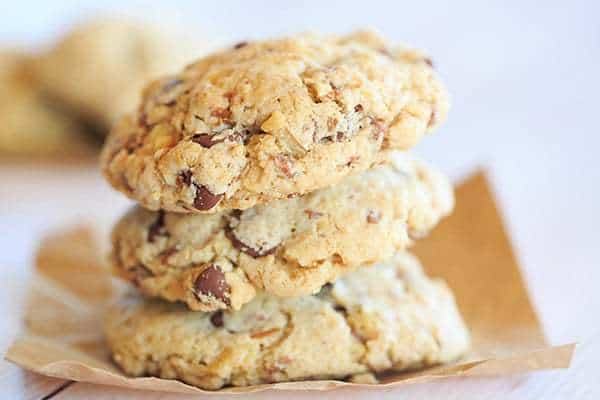When it comes to baking, the choice of ingredients can make all the difference in achieving the perfect texture and flavor. One ingredient that often comes to mind is butter. But what if you don’t have traditional stick butter on hand? Can you substitute it with spreadable butter? Let’s find out.
Key Takeaways:
- Spreadable butter may not be the best choice for baking due to its impact on texture and flavor.
- It has a higher water content, resulting in softer or less crispy baked goods.
- Using spreadable butter may require recipe adjustments to balance the moisture content.
- However, certain baked goods like muffins, quick bread, and cookies can accommodate the use of spreadable butter.
- Spreadable butter is different from margarine, which is a non-dairy product made from vegetable oils and water.
The Impact of Spreadable Butter on Baked Goods’ Texture and Flavor
When it comes to baking, the choice of butter can significantly affect the texture and flavor of your favorite treats. Spreadable butter, with its higher water content compared to regular butter, can have a noticeable impact on the final outcome. The additional moisture in spreadable butter can result in a softer or less crispy texture, which may not be ideal for certain baked goods.
In terms of flavor, spreadable butter’s higher water content can dilute the taste of baked goods. This can lead to a milder flavor profile, potentially affecting the overall enjoyment of your creations. It’s important to consider whether this subtle change in taste aligns with your desired outcome.
When deciding whether to use spreadable butter in baking, it’s crucial to strike a balance between convenience and the potential alterations in texture and flavor. While spreadable butter eliminates the need for pre-softening and offers ease of use, it may require recipe adjustments to achieve the desired results. This could involve reducing other liquid sources in the recipe and making slight alterations to ingredient proportions.
| Baked Good | Suitability for Spreadable Butter |
|---|---|
| Muffins | Yes |
| Quick Bread | Yes |
| Pancakes | Yes |
| Waffles | Yes |
| Cookies | Yes, with potential flavor variations |
| Brownies | Yes, with potential texture variations |
| Bars | Yes, with potential texture variations |
| Cake Batters | Yes, with potential texture variations |
While spreadable butter may not be ideal for all baking recipes, there are specific types of baked goods that can accommodate its texture and moisture content. Muffins, quick bread, pancakes, waffles, cookies, brownies, bars, and cake batters are some examples of recipes where spreadable butter can be a viable option. However, it’s essential to consider the specific recipe and desired texture when making your decision.
Convenience vs. Recipe Adjustments
When it comes to using spreadable butter for baking, convenience is undoubtedly a major advantage. With spreadable butter, there’s no need to soften it beforehand, making it a time-saving choice in the kitchen. However, it’s important to consider the potential recipe adjustments that may be necessary when using spreadable butter.
Due to its higher moisture content compared to regular butter, recipe adjustments may be required to achieve the desired outcome. This can include reducing other liquid sources in the recipe and making slight alterations to ingredient proportions. It’s crucial to strike the right balance between convenience and the potential changes in texture and flavor that spreadable butter may introduce.
To ensure successful baked treats, it’s a good idea to start by testing the substitution with a small batch. This allows you to gauge the impact of spreadable butter on your specific recipe and make any necessary adjustments. By being open to tweaking ingredients based on the results, you can achieve the desired texture and flavor, while still enjoying the convenience of using spreadable butter.
Considerations for Using Spreadable Butter in Baking:
- Reduce other liquid sources in the recipe when using spreadable butter.
- Make slight alterations to ingredient proportions to account for the higher moisture content.
- Test the substitution with a small batch to assess its impact on texture and flavor.
- Be open to making ingredient adjustments based on the results to achieve the desired outcome.
| Difference | Spreadable Butter | Regular Butter |
|---|---|---|
| Texture | Softer and spreadable | Firm |
| Moisture Content | Higher | Lower |
| Suitability for Baking | May require recipe adjustments | Traditional choice |
Baked Goods Suitable for Spreadable Butter
When it comes to using spreadable butter for baking, not all recipes are created equal. While it may not be the best choice for every baked good, there are certain types of treats that can successfully accommodate its unique texture and moisture content. Whether you’re looking to whip up fluffy muffins, indulgent brownies, or a moist cake, spreadable butter can be a viable option to consider.
Table: Baked Goods Suitable for Spreadable Butter
| Baked Good | Suitability with Spreadable Butter |
|---|---|
| Muffins | works well |
| Quick bread | works well |
| Pancakes | works well |
| Waffles | works well |
| Cookies | works well with slight adjustments |
| Brownies | works well with slight adjustments |
| Bars | works well with slight adjustments |
| Cake batters | works well with slight adjustments |
It’s important to note that when using spreadable butter in baking, some recipe adjustments may be necessary. Due to its higher moisture content, you may need to reduce other sources of liquid in the recipe and make slight alterations to ingredient proportions to ensure the desired outcome. We recommend testing the substitution with a small batch and being open to tweaking ingredients based on the results. This way, you’ll have a greater chance of achieving delicious and satisfying baked treats.
In conclusion, while spreadable butter may not be ideal for all baking recipes, it can certainly be a suitable choice for specific types of baked goods. By considering the texture and moisture requirements of your recipe, and being willing to make adjustments as needed, you can enjoy the convenience of using spreadable butter while still achieving delicious results. So go ahead, grab that jar of spreadable butter and get ready to bake up something delightful!
Understanding the Difference Between Spreadable Butter and Margarine
In the world of spreads, it’s important to understand the difference between spreadable butter and margarine, especially when it comes to baking. Spreadable butter is made from real dairy butter, with added oils to make it soft and easy to spread, even when refrigerated. On the other hand, margarine is a non-dairy product made from vegetable oils and water.
The key distinction lies in the ingredients and properties of these two spreads. Spreadable butter provides the desired flavor and texture in baked goods, making it a better choice for baking purposes. Margarine, on the other hand, may yield different results and may not deliver the same rich taste and creamy texture that butter provides.
When it comes to baking with spreadable butter, it’s important to note that its higher moisture content can impact the overall outcome of the baked goods. This means that careful consideration and recipe adjustments may be necessary to achieve the desired texture and flavor. However, with proper experimentation and mindful adjustments, spreadable butter can be successfully used in a variety of baking recipes.
| Spread | Composition | Key Differences |
|---|---|---|
| Spreadable Butter | Real dairy butter with added oils | Provides desired flavor and texture for baking |
| Margarine | Non-dairy product made from vegetable oils and water | May yield different results in baking |
Ultimately, the choice between spreadable butter and margarine for baking comes down to personal preference and the desired outcome of the baked goods. Spreadable butter offers the convenience of a spread that can be used straight from the refrigerator without the need to soften it beforehand. However, it’s important to be aware of the potential changes in texture and flavor and make any necessary adjustments to the recipe.
In summary, spreadable butter and margarine have distinct differences when it comes to their composition and properties. While spreadable butter is a better choice for baking due to its rich flavor and desired texture, margarine may yield different results. Understanding these differences allows us to make informed decisions when selecting a spread for our baking needs.
Final Thoughts on Using Spreadable Butter for Baking
When it comes to using spreadable butter for baking, convenience is a major factor. The ability to skip the process of softening butter can be a time-saver in the kitchen. However, it’s important to consider the potential impact on the texture and flavor of your baked goods.
Spreadable butter, with its higher moisture content, can result in a softer and less crispy texture in cookies, cakes, and breads. This may not be desirable for certain recipes that call for a specific texture. Additionally, the flavor of spreadable butter can differ from traditional stick butter, which could affect the overall taste of your creations.
If you do choose to use spreadable butter, recipe adjustments are often necessary. Reducing other sources of liquid in your recipe and making slight alterations to ingredient proportions can help compensate for the increased moisture content. It’s always a good idea to test the substitution with a small batch first to gauge the results and make any necessary tweaks.
In conclusion, while using spreadable butter for baking can offer convenience, it’s crucial to carefully consider the potential changes in texture and flavor. Experimentation, recipe adjustments, and selecting recipes that can accommodate variations in texture are key to achieving delicious results. So, next time you reach for the spreadable butter in your baking endeavors, be prepared to make the necessary adjustments for a successful outcome.
FAQ
Can spreadable butter be used instead of butter when baking?
Experts do not recommend using spreadable butter in any baking application.
How does spreadable butter affect the texture and flavor of baked goods?
Spreadable butter, with its higher water content, can result in a softer or less crispy texture and may have a milder taste in the final baked goods.
Does using spreadable butter in baking require recipe adjustments?
Yes, the higher moisture content of spreadable butter may require adjustments to other liquid sources and ingredient proportions in the recipe.
What types of baked goods are suitable for spreadable butter?
Muffins, quick bread, pancakes, waffles, cookies, brownies, bars, and cake batters are some examples of recipes where spreadable butter can be a viable option.
What is the difference between spreadable butter and margarine?
Spreadable butter is made from real dairy butter with added oils, while margarine is a non-dairy product made from vegetable oils and water.
What should be considered when using spreadable butter for baking?
Recipe adjustments, careful testing with small batches, and choosing recipes that can accommodate variations in texture are important when using spreadable butter for baking.



